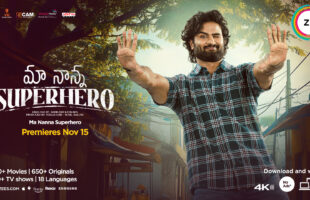TV ASIA Plus: There were concerns that OTT would bypass Pay-TV. But a lot of infrastructure is held by Pay-TV operators or telcos. Can OTT operators truly go solo?
No. OTT at its core is video content delivering through IP technology and IP technology is being provided by its cable internet or its telco, so the infrastructure is necessary. OTT service is “on top of” that infrastructure and there is absolutely no way to bypass that.
TV ASIA Plus: It’s been said that “cord cutting” is a threat to Pay-TV. So is OTT a threat or opportunity?
In Asia Pacific last year, there were 411m Pay-TV subscribers and this number is expected to grow to under 700m in 2020. That’s a compound annual growth rate of about 6%. Several markets in Southeast Asia receive Pay-TV penetration under 30%, Indonesia for example. When you look at that, there’s a lot of upside – there’s so much more of the market to go.
TV ASIA Plus: Would you say that in Asia, broadcasters could be providers of OTT as opposed to an “independent” supplier like Netflix or Hulu?
In the US, Netflix accounts for 25% of bandwidth. In some ways, the broadband providers actually provide Pay-TV services as well and they are actually benefiting from it.
Consumers actually have to pay for broadband at home for them to get the service. For services like Hulu, it is in response to an appetite for premium video content streamed online; that you can select WHAT you want to watch, WHEN you want to watch. From a studio perspective – “I have this large content library; my first window might be Pay-TV and the second can then be a Netflix or a Hulu.” So they can co-exist so that it is not a zero sum that it’s either Pay- TV or Hulu – it could actually be both.
TV ASIA Plus: In the US, it’s taken broadcasters and studios some time to relinquish their online rights. Do you see this as a case for Asia as well?
In the US, the OTT services are spending money for content. That’s what changes the game. Before, if it takes (giving away) some of your premium content just to see if you can make money and then split that; that doesn’t help the studio. What’s changing is that there are some of these (OTT) providers that are paying for the content upfront. So if you are going to pay me then I’m going to look at you like how I look at any other customer.
TV ASIA Plus: In terms of content, Hulu is an interesting example as it has its own original content. Do you see this as a new way of positioning OTT?
Yes, I think that’s a great move forward. It’s not easily done because to make premium content comes with a price. From an advertising standpoint, it’s difficult if you are selling an advertiser against a library content. It is also difficult to sell an advertiser against generated content because (if) I am an advertiser, I have my brands to uphold and my brands are going to get placed against some random content? That’s a harder discussion versus “here’s a new series, here’s what it’s about, here’s the core audience, and here’s the audience size that I think will be.”
Recently, there was the Digital Content NewFronts (Editor: The inaugural DCNF was held April 19 – May 2 as an ad sales event to rival the traditional broadcast Upfronts). Right now, it’s all about the (broadcast) Upfronts. This Upfront, they’re expecting US$9 billion (in Pay-TV advertising). Now these OTT players are doing kind of the same thing. I think if you can actually aggregate your audience… in October last year, 1.2 billion people aged 15+ watched an online video. In aggregate, these 1.2 billion people watched 201 billion videos. This is global. If I am an OTT, if I slice and dice this 1.2 billion, and if my quality content rises above and I can find an audience, say just several million people watching premium content, I think that’s attractive (enough) to take to an advertiser.
TV ASIA Plus: Do Asian producers feel there are avenues to produce localised content specifically for OTT providers?
I would like to think that’s the case. One of the challenges of the linear television model is that you only have so much time to programme content. In an OTT model, it doesn’t necessarily matter what time your programming is or when is it. In that way, you are expanding the opportunity.
I was just looking at some shows in the US that were just cancelled like CSI: Miami. It has an average audience of 10m which is very good today. Their reason for cancelling that I read into was that the network only had one time slot and it wants to use that time slot to introduce some new show. Some of my favourite TV shows are series that never found a big enough audience and unfortunately they just got cancelled. The critics love them, but consumers just don’t watch them. There is this new breed of content producers on platforms like YouTube, and they are also digital social media marketers. So, they have it, they understand it and they exploit it quite well. I think that’s somewhat different from your traditional studio or independent producer for a television show.
TV ASIA Plus: One of the points raised at Digital Matters is that in a multiscreen environment, audiences will always choose the “larger” screen but I think you have a different take on that, and it’s regarding control?
I was just speaking from my own experience. My son prefers the tablet over the TV set. If he has a choice, he’s choosing the iPad and YouTube over TV. My son would be considered a digital native and like any digital native growing up with iPads and this type of control from a very early age, this is all that he knows. He then started to discover some TV shows he likes and I have to explain to my 2-year old that “what you want is not on until 7pm.” He’s kind of decided for himself that “I want to watch it now.” And then this other option is put in front of him; an iPad, and he knows how to navigate, he can choose the video, they show him four clips and he can watch the full 22-minute episode – he just gravitates towards that. So then I started thinking, how many kids are like him and what is this going to mean 5 – 10 years down?
That to me is really interesting and there’s potential for transformational change in how people are consuming the entertainment content and then the business models and a lot of infrastructure that goes into supporting the current model, maybe some of these generational change. If you’re an OTT player, I’m sure you could put your lens on and see that you can go in many ways to navigate and exploit this. If you’re an incumbent Pay-TV channel you’d think about granting access to content through digital devices too so it’s a win-win.







